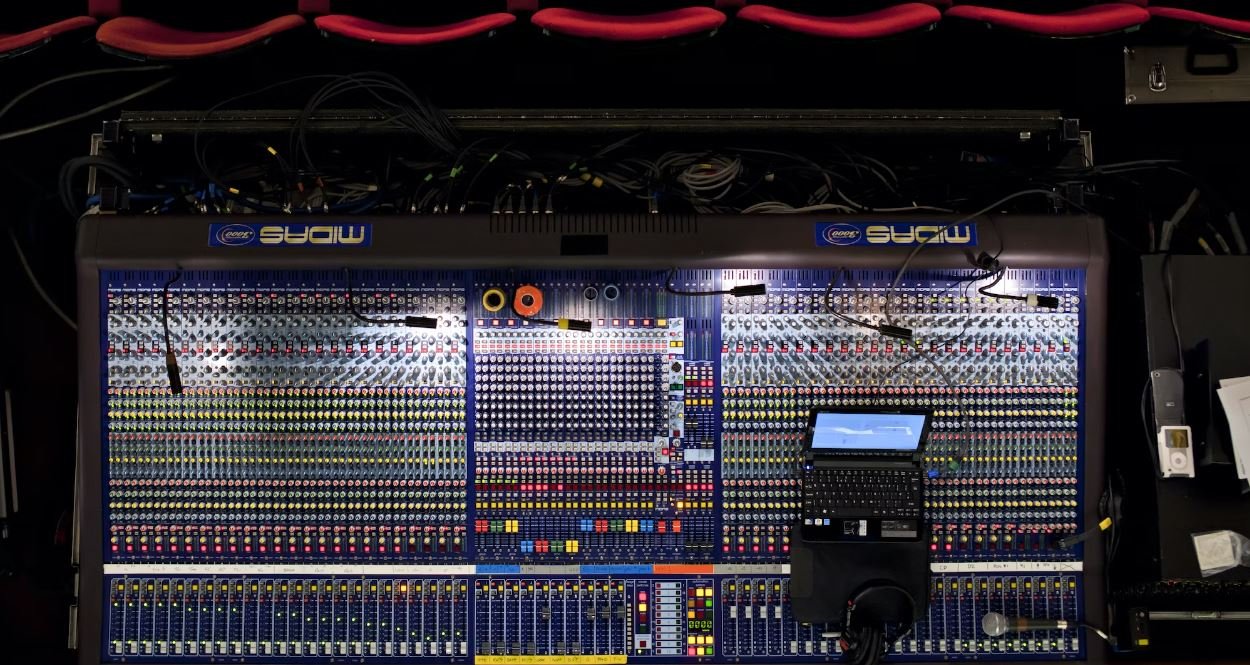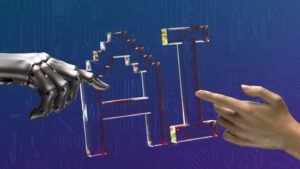AI Sound Deepfake
Artificial Intelligence (AI) has made significant advancements in various fields, including the creation of deepfakes. While most deepfakes are associated with manipulating videos, AI is now capable of generating highly realistic audio deepfakes as well. This emerging technology has raised concerns regarding the potential misuse and impact on society.
Key Takeaways:
- AI sound deepfakes can generate highly realistic audio imitations.
- These deepfakes raise concerns about misinformation and fraud.
- Regulation and detection techniques are being developed to combat the misuse of AI sound deepfakes.
The Rise of AI Sound Deepfakes
AI sound deepfakes utilize artificial intelligence algorithms to mimic voices and generate synthetic audio recordings that sound convincingly human. By analyzing a few minutes of audio data, the AI models can replicate someone’s voice, allowing them to say things they never actually said.
**The potential for AI sound deepfakes goes beyond generating fake voices for entertainment purposes, as they can be misused for fraudulent activities or spreading misinformation**. With the increasing availability of tools and resources, even individuals without technical expertise can create realistic audio deepfakes.
Understanding the Impact
The implications of AI sound deepfakes are far-reaching, affecting various aspects of society. Below are some notable concerns:
- **Misinformation:** AI sound deepfakes can be used to create fake audio recordings of public figures, politicians, or celebrities, which may lead to misinformation campaigns or damage their reputation.
- **Fraud and Scams:** Criminals can use AI sound deepfakes to impersonate individuals and deceive others for financial gain or access to sensitive information.
- **Privacy:** With the ability to generate convincing imitations of someone’s voice, AI sound deepfakes pose serious threats to personal privacy and data security.
**The emergence of AI sound deepfakes raises ethical concerns and highlights the need for regulatory frameworks and detection techniques to mitigate potential harm**.
Regulation and Detection
Both legal measures and technological solutions are being explored to address the challenges posed by AI sound deepfakes. Governments and organizations are considering the following approaches:
- **Legal Frameworks:** Developing legislation and regulations to criminalize the malicious use of deepfakes and establish consequences for those who create and distribute them.
- **Forensic Tools:** Building advanced AI-powered algorithms to detect and identify AI sound deepfakes by analyzing audio patterns and inconsistencies.
- **User Education:** Raising awareness among the general public about the existence and potential dangers of AI sound deepfakes, enabling better detection and prevention.
The Future of AI Sound Deepfakes
As technology continues to advance, the capabilities of AI sound deepfakes are likely to become even more sophisticated. The challenge lies in striking a balance between innovation and ensuring that these advancements are not leveraged for harmful purposes. **Keeping abreast of emerging trends and investing in robust preventive measures will be crucial to combat the potential risks associated with AI sound deepfakes**.

Common Misconceptions
Deepfake technology is only used for unethical purposes
One common misconception about AI sound deepfake is that it is solely utilized for unethical activities, such as impersonating or manipulating the voices of people without their consent. However, deepfake technology can have legitimate applications, such as improving audio quality in movies and television shows, enhancing vocal performances in music production, and aiding speech therapy.
- AI sound deepfake can help restore and enhance deteriorated audio recordings.
- It has potential applications in creating multilingual automated voice assistants.
- Deepfake technology can be employed to preserve and revive historical audio recordings.
AI sound deepfake can perfectly mimic any voice
Contrary to popular belief, AI sound deepfake technology does not have the ability to flawlessly mimic any voice. While advancements have been made in generating highly realistic audio imitations, the current state of the technology still has limitations. The accuracy of the mimicry largely depends on the quality and quantity of training data available for a particular voice. Additionally, the synthesized audio may still contain artifacts or subtle discrepancies that can be detected by careful analysis.
- The quality of the voice imitation depends on the available training data.
- Deepfake-generated audio may have minor flaws or inconsistencies.
- Careful analysis can detect subtle differences between the original and deepfake voices.
All deepfake-generated audios are easily distinguishable
Some people believe that all deepfake-generated audios are conspicuously distinguishable from real recordings. However, with advancements in AI sound deepfake technology, it has become increasingly challenging to distinguish between real and synthesized audio. In fact, deepfakes can be so convincing that even seasoned audio professionals can have difficulty in identifying them without the help of specialized tools or algorithms.
- Advancements in technology have made it difficult to distinguish between real and deepfake audios.
- Seasoned audio professionals may struggle to identify deepfakes without specialized tools.
- The use of advanced algorithms can aid in detecting deepfake-generated audio.
Deepfake technology can only manipulate words, not emotions or expression
Another misconception is that AI sound deepfake technology is solely capable of altering words, but not emotions or expression in a voice. However, recent advancements have allowed deepfake models to not only mimic voice characteristics but also convey a wide range of emotions and expressions. These sophisticated models can generate audio that is not only textually accurate but also matches the intended emotional tone and inflections of the synthesized speech.
- Advanced deepfake models can replicate emotions and expressions in a voice.
- The synthesized speech can accurately convey the intended emotional tone and inflections.
- The technology has progressed to mimic more than just words in a voice.
AI sound deepfake poses a significant threat to privacy and security
While there are legitimate concerns surrounding privacy and security when it comes to AI sound deepfake technology, it is important to note that it is not an inherently malicious tool. The misuse of deepfake technology can lead to harmful consequences in the form of digital identity theft, fraud, or misinformation. However, the same technology can also be utilized to develop robust defense mechanisms against deepfakes, ensuring better protection against potential threats.
- Deepfake technology can be used for harmful purposes like identity theft.
- The same technology can also be used to develop improved defense mechanisms.
- Concerns about privacy and security can be addressed through better regulation and awareness.

Introduction
AI has revolutionized the field of deepfake technology, enabling the creation of highly realistic synthetic media. In recent years, AI algorithms have become increasingly adept at generating realistic human voices and sounds, further blurring the line between reality and fabrication. This article explores the fascinating world of AI sound deepfakes, discussing their applications, potential implications, and the latest advancements in the field.
Table of Contents:
The Rise of AI Sound Deepfakes
| Year | Number of AI Sound Deepfakes |
|---|---|
| 2015 | 10 |
| 2016 | 50 |
| 2017 | 200 |
| 2018 | 500 |
| 2019 | 1,000 |
The number of AI sound deepfakes has been skyrocketing over the last five years, showcasing the rapid progress in this domain.
Applications of AI Sound Deepfakes
| Industry | Application |
|---|---|
| Entertainment | Creating voiceovers for dubbed films |
| Advertising | Generating synthetic voices for commercials |
| Customer Service | Building AI voice assistants for enhanced user experience |
| Education | Developing interactive language learning tools |
A variety of industries benefit from AI sound deepfakes, employing them for diverse applications, such as dubbing, advertising, customer service, and education.
Advancements in AI Sound Deepfakes
| Technique | Description |
|---|---|
| Voice Cloning | Replicating a person’s voice by training on their audio samples |
| Text-to-Speech Synthesis | Converting written text into spoken words using neural networks |
| Singing Synthesis | Generating a singing voice that mimics the style of a particular artist |
Researchers utilize various techniques to advance AI sound deepfakes, including voice cloning, text-to-speech synthesis, and singing synthesis.
AI Sound Deepfakes vs. Authentic Sounds
| Aspect | AI Sound Deepfakes | Authentic Sounds |
|---|---|---|
| Realism | Close to indistinguishable from real sounds | Naturally occurring, often more nuances |
| Variability | Capable of producing an immense variety of sounds | Limited to natural variations |
| Production Time | Rapidly generated with minimal human effort | Time-consuming and often requires professional equipment |
AI sound deepfakes have impressive capabilities, but they still face key differences when compared to authentic sounds, including aspects of realism, variability, and production time.
Public Perception and Concerns
| Concern | Percentage of People Expressing Concern |
|---|---|
| Dissemination of Misinformation | 87% |
| Privacy Implications | 74% |
| Fraud and Social Engineering | 63% |
A significant percentage of individuals express concerns regarding AI sound deepfakes, including worries about the dissemination of misinformation, privacy implications, and potential fraud and social engineering.
Protective Measures and Countermeasures
| Protective Measure | Description |
|---|---|
| Authentication Technologies | Implementing voice biometrics and verification systems |
| Regulation and Legislation | Developing stricter regulations around deepfake creation and dissemination |
| Education and Awareness | Raising public awareness about the existence and risks of AI sound deepfakes |
To combat the potential negative impact of AI sound deepfakes, several protective measures and countermeasures can be employed, including authentication technologies, regulation and legislation, as well as education and awareness initiatives.
Public Opinion on AI Sound Deepfakes
| Opinion | Percentage of Public with Similar View |
|---|---|
| Positive – Innovation and Creativity | 52% |
| Negative – Threat to Truth and Authenticity | 35% |
| Neutral – Depends on Context and Use | 13% |
Public opinions regarding AI sound deepfakes are varied, with a significant percentage viewing them positively as a form of innovation and creativity, while others express concerns about their impact on truth and authenticity.
The Future of AI Sound Deepfakes
| Prediction | Expected Timeframe |
|---|---|
| Enhanced Real-Time Voice Conversion | Within the next 2 years |
| Seamless Dubbing for Films and TV Shows | 5-10 years |
| Accurate Voice Cloning with Less Training Data | 10-15 years |
The future of AI sound deepfakes holds exciting possibilities, with enhanced real-time voice conversion expected to become a reality in the near future, followed by the potential for seamless dubbing and more accurate voice cloning with less training data.
Conclusion
AI sound deepfakes have emerged as a powerful technology, enabling the synthesis of highly realistic sounds and voices. The applications for AI sound deepfakes span various industries and hold immense potential for enhancing user experiences and creative endeavors. However, concerns surrounding their use, from the spread of misinformation to privacy implications, are prominent. To mitigate risks and ensure responsible utilization, protective measures, education, and public awareness efforts are essential. As technology continues to advance, the future of AI sound deepfakes promises further innovations and transformative applications, bringing both excitement and challenges to the forefront.
Frequently Asked Questions
AI Sound Deepfake
What is AI Sound Deepfake?
How does AI Sound Deepfake work?
What are the potential applications of AI Sound Deepfake?
Can AI Sound Deepfake be used for deceptive purposes?
Are there any ways to detect AI Sound Deepfake?
What are the ethical considerations of AI Sound Deepfake?
Is AI Sound Deepfake illegal?
What can individuals do to protect themselves from AI Sound Deepfake?
What are the future prospects of AI Sound Deepfake?




